QuestionHi Jill,
I'll be as to the point as possible. Adopted a 3 year old chihuahua who was clearly under socialized and exhibited anxiety/fear. I immediately began his rehabilitation. Socialization classes which have been extremely effective he is 100% around any other dog now. He's gained a lot of confidence. He's walked twice a day for 30-45 mins and twice on the weekends 1-1.5 hours each time. He's quite active. If its cold he's trained to run on the treadmill and I often play scent tracking and various mentally challenging games with him. I treat him 100% like a normal dog no babying nothing, he is 100% comfortable with me and my wife and my in laws. I can do anything to him absolutely anything and he will not react. Here's the problem, when people enter our house I have him sit and wait and when they sit down he's allowed to smell them etc. If strangers get up and start moving/walking at a normal pace he will try to bite them from behind / grab their pant legs and pull accompanied by barking. I've had people give him treats and walk around slowly to try and acclimate him to movement and last time even though the individual was moving slowly I saw him first very slowly open his mouth and make a bite motion as a warning then a second later bite down and grab the persons pant leg and shake it like killing a rat etc. I usually have to watch him extremely closely and distract him when people move. His body language, ears are usually up and forward (not all the time) he moves quietly almost stalking-like (but not quite) and is lower when he moves. He exhibits the same behaviour if someone approaches him. If an individual was present in the house and remained seated and did not move he would fall asleep, relax, play, everything, movement seems to be the trigger. When I take him out to someone else's house he doesn't exhibit the same behaviour, not nearly as severe at least. I have people ignore him when they come over but it still hasn't helped. I'm not sure what to make of this, he's exercised, mentally stimulated, and I'm continuing to socialize him. Any thoughts?
AnswerClassic fear biting is "attack from behind". If the dog NEVER exhibits this behavior in other people's homes, then it's an acquired conditioned response in your environment or generalized from his former "home" environment. If he has even ONCE exhibited this behavior in someone else's home, it's fight/flight, no cognition involved. These require different strategies.
Active dog to human aggression is a serious problem. Yes you are providing excellent ownership and care (although that much exercise for a dog that tiny may be stressing him orthopedic-ally, I'd ask the vet about this). This dog will get worse without in person assessment and professional intervention (I can't see anything from here). Giving visitors treats is not the answer because you don't know what the dog is THINKING or what his reaction is based upon and there are dogs who will accept treats even when highly stressed (therefore, rewarding the behavior). Every time this dog interacts in this manner with anyone, he learns more about how to use aggression. Not good.
I suggest you find a certified applied animal behaviorist (CAAB) in your area (if at all possible).
http://www.arkanimals.com/ark/dg_expert_referrals.html
http://www.iaabc.org/
Without "eyes on" I can't diagnose cause. Cause is extremely important since redirection or counter conditioning depends directly upon it. Meanwhile: do not allow the dog to successfully "attack" anyone. You can do this by protecting him from visitors (confining him well before hand with safe toy/rewarding toy, like Buster Cube) or putting a house tab (lightweight leash with handle cut off) on him and setting him up (inviting a "visitor" for this purpose at least twice to three times a week) and very, very closely observing him. This is tricky since, if this is fight/flight, there's a chance removing him at any sign of aggression will worsen his response. The method: observing the dog, at the moment you SEE and KNOW that he is about to react, pick up the leash, no eye contact, no comment, put him behind a closed door for one minute, allow him back into the room, say and do nothing. Repeat (observe, confine) until the dog has accepted the "visitor" (makes absolutely NO apparent response that worries you). Again, this is tricky because motivation is a huge factor in treatment methodology.

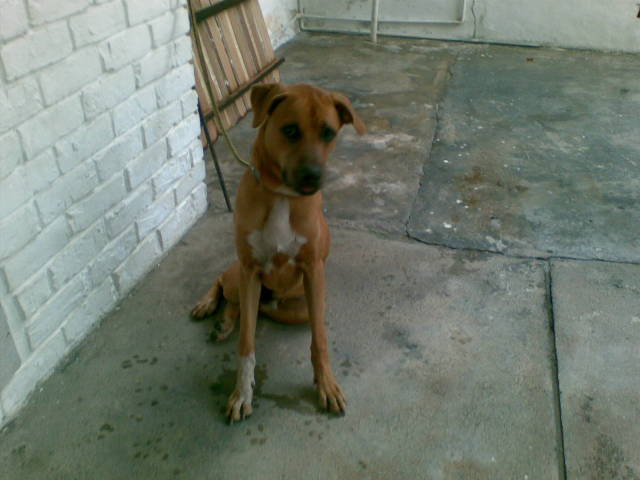 dogs behaviour
QuestionMy 8 months old Dusto
QUESTION: My puppy
dogs behaviour
QuestionMy 8 months old Dusto
QUESTION: My puppy
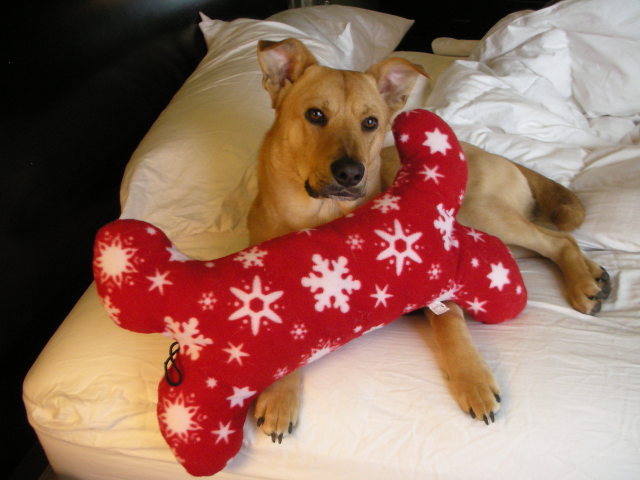 Very Scared Dog
Question
Happy
My dog is 17 months old and is a mixed b
Very Scared Dog
Question
Happy
My dog is 17 months old and is a mixed b
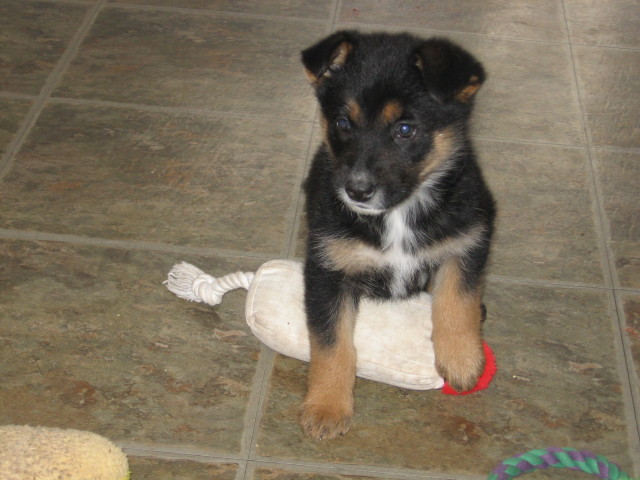 puppy problems
QuestionQUESTION: I am the proud owner of 2 german shep
puppy problems
QuestionQUESTION: I am the proud owner of 2 german shep
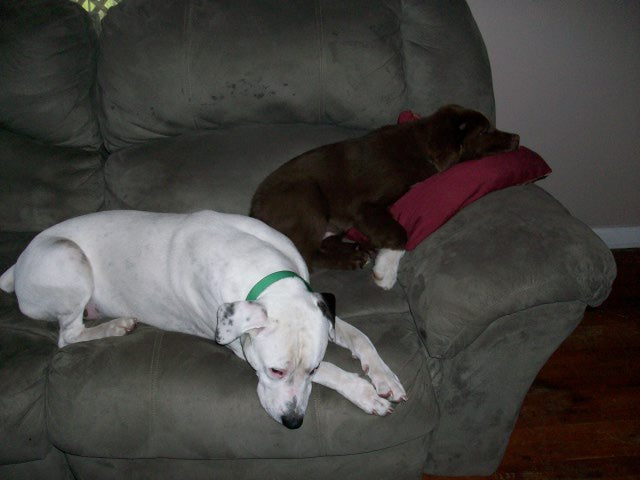 American Bulldog aggression
Question
Buddy and Rez
I have a 2 year old Ameri
American Bulldog aggression
Question
Buddy and Rez
I have a 2 year old Ameri
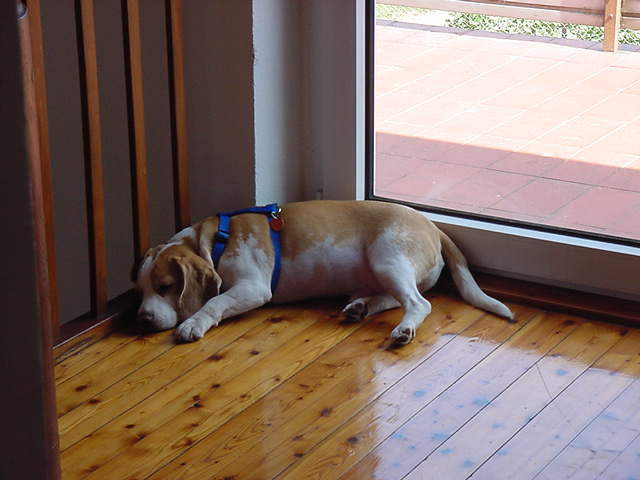 licking the floor not stop
QuestionGeorgie
QUESTION: Hi,
I have a 7 year ol
licking the floor not stop
QuestionGeorgie
QUESTION: Hi,
I have a 7 year ol